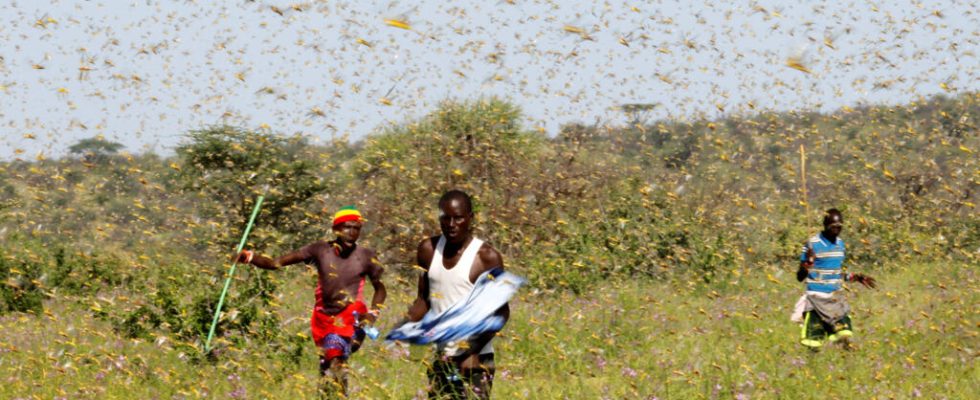Global warming threatens certain species, but could well favor others. And that’s not necessarily good news for men. According to a study published in Science Advances, locust invasions could increase. However, a swarm of one square kilometer can devour 35,000 people in one day.
2 mins
Dark clouds of locusts could soon threaten new countries. According to a study published in Science Advances, giant swarms of locusts could become more frequent according to forecasts for the period 2065-2100. Two scenarios were studied.
Read alsoHow Uganda is adapting to desert locust risk
Even in a scenario of substantial reduction in greenhouse gas emissions, the risk will remain high for areas already affected by invasions, such as the Horn of Africa or the northwest of the continent, and the habitat of locusts. pilgrims should expand by 5%. In the scenario of an economy based on fossil fuels, the areas invaded by these insects could increase by 13 to 25%. Countries not accustomed to these insects, such as western India, Iran, Afghanistan or Turkmenistan, could be reached.
Risk of synchronized attacks
According to the study, arid areas hit by extreme rains are particularly favorable to the emergence of locust attacks. With soil moisture, the eggs finish developing and the vegetation, on which the larvae feed, grows. However, global warming will tend to increase droughts and the intensity of extreme rains. Temperature plays a role in egg incubation and massive flights: locusts must be warm enough to flap their wings. Researchers also warn of the risk of synchronized attacks in several countries thanks to floods and winds. An additional danger in terms of food safety.
Read alsoBurundi: faced with the invasion of locusts, picking by hand
